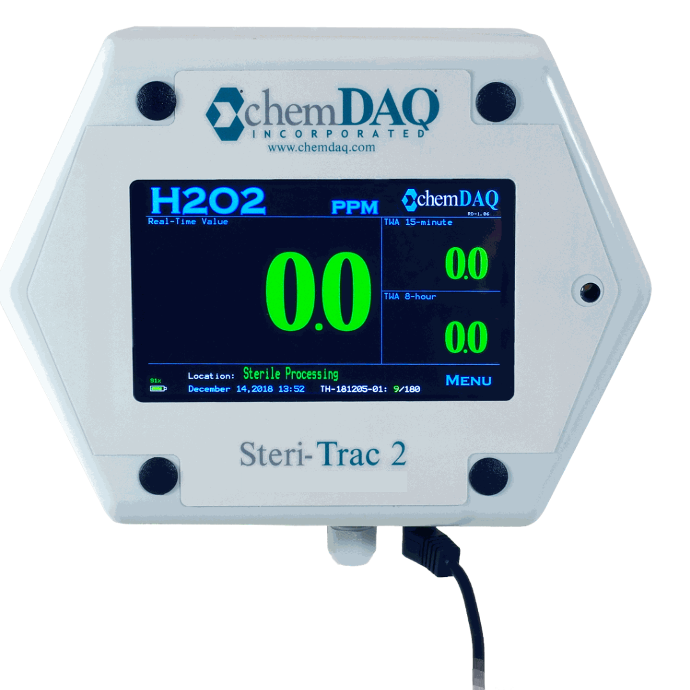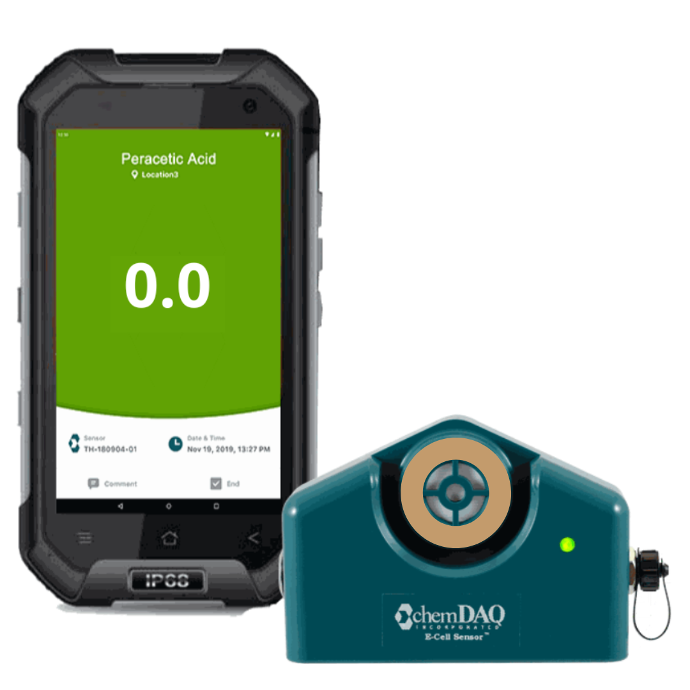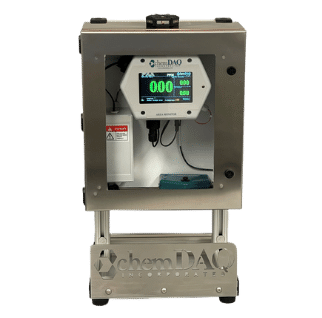How to Ensure Comprehensive Monitoring of PAA
1. Start with your storage area.
PAA storage areas contain both the highest volume and concentration of PAA in a protein processing facility. While workers may not be stationed full-time in these areas, large totes of PAA must constantly be filled and/or replaced. This task not only puts workers at risk, but increases the dangers of leaks or spills of this harmful chemical.
The risk of PAA exposure beyond permissible exposure levels is great. PAA totes are susceptible to punctures or leaks, and totes are often kept in small, enclosed rooms which creates a dangerous scenario for highly toxic vapor levels in the air.
Steri-Trac® Series
ChemDAQ’s Steri-Trac Series is an efficient solution to monitor these areas around-the-clock. These fixed units can be mounted inside the storage room and will alert you if a leak is detected. To ensure safety for those working around the storage totes, the Steri-Trac measures 15-minute Time Weighted Average (TWA) readings and provides both impending and high alarms to notify workers if and when levels may be unsafe. Remote displays can be added outside of the storage area to display real-time readings to ensure levels are within a safe range prior to entering. Use the Steri-Trac unit to optimize your PAA filling and storage operations by recording data to view trends among readings.
Learn More2. Add portable units to your safety protocol.
Once the PAA moves from the storage unit to the plant floor, most workers inside the facility will have direct exposure to this toxic chemical. Exposure to PAA can occur from inhalation or direct contact and exceeding the exposure limits can cause irritation to the eye, nose, throat and skin as well as a multitude of respiratory issues. That’s why worker exposure to PAA is closely monitored by governing bodies like OSHA and the USDA.
SafeCide™ Series
Compliance and worker health and safety can be easily managed with ChemDAQ’s
SafeCide Series, a portable, handheld device that can be taken across the plant floor to gather real-time readings and to identify leaks and hotspots. We recently announced a new 2.1 software (link to press release) for the SafeCide device which provides enhancements to the applications most commonly used by customers and new features to put additional capabilities in the hands of safety personnel. Multiple SafeCide units are recommended to ensure all areas can be properly monitored.
3. Monitor the wet areas of your plant.
The environment in which PAA is used throughout protein processing facilities can be challenging to monitor given that it’s often a harsh, wet climate. However, workers in or around spray bars, dip tanks, and chillers are also at risk of overexposure, so monitoring in these challenging conditions is a must.
VaporAlert™ Series
ChemDAQ’s VaporAlert™ Series is the first and only water-resistant monitoring system on the market and was specifically designed to continuously monitor PAA in the wet areas of plants. The VaporAlert is a fixed unit, much like the Steri-Trac Series, that provides and displays real-time measurement of vapor concentrations in parts per million.
See How Leading Brands Monitor Using the ChemDAQ Suite of Products
Looking to identify an affordable, reliable and accurate monitoring solution for PAA, Wayne-Sanderson Farms discovered ChemDAQ nearly 10 years ago and has since rolled out ChemDAQ's monitoring systems company-wide across the U.S.

ChemDAQ is proud to serve the protein processing industry.
Learn more about why leading brands choose ChemDAQ.


